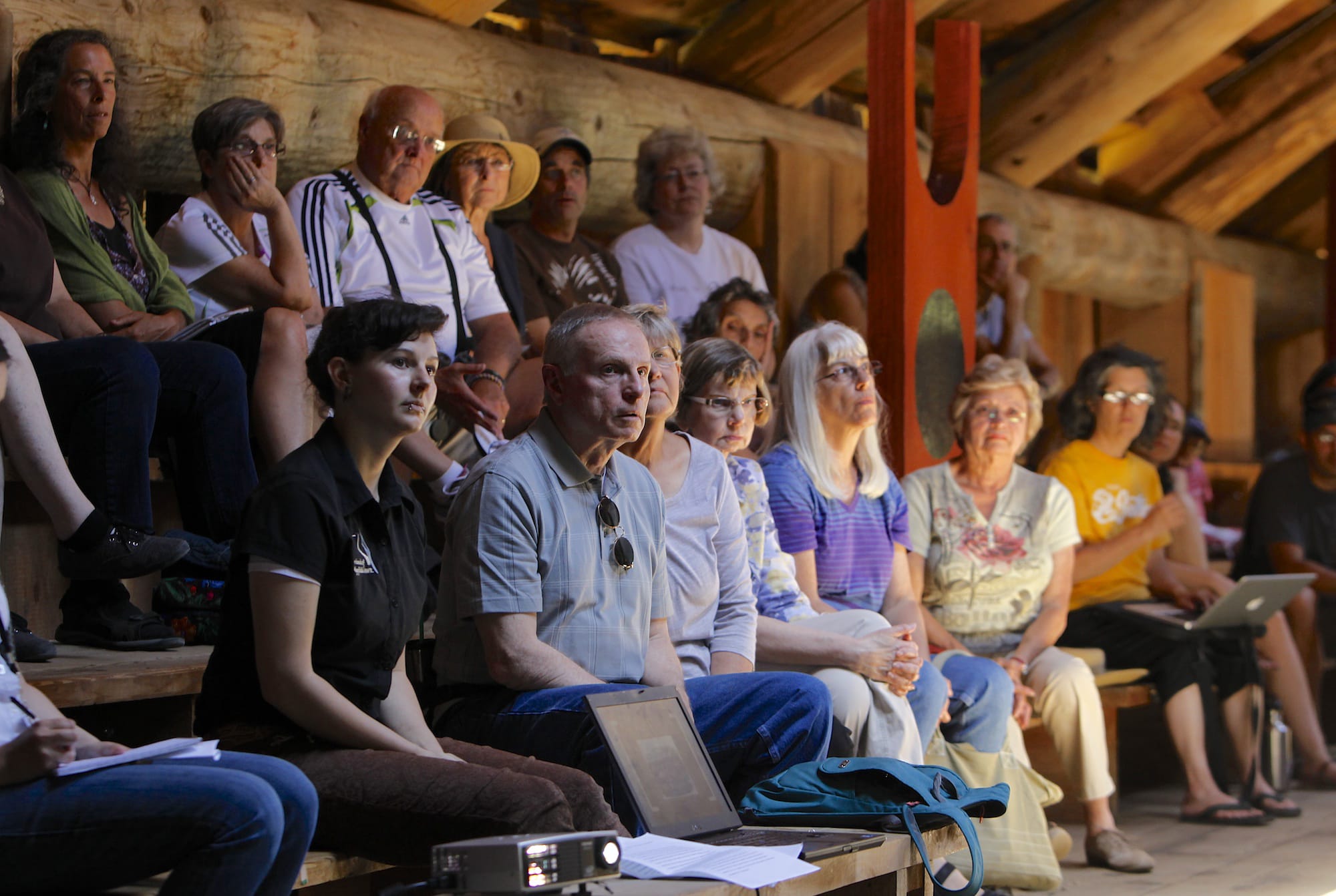On the Web
Information about the Northwest Indian College’s traditional foods project: http://www.nwic.edu/content/traditional-plants
Information about events at the Cathlapotle Plankhouse: http://ridgefieldfriends.org/plankhouse
Did you know?
The Cathlapotle Plankhouse, at 28908 N.W. Main Ave., Ridgefield, was built in 2005 to replicate a plankhouse used in the Chinookan village of Cathlapotle. The village stood for 450 years on what is now the Ridgefield Wildlife Refuge. The plankhouse is used to host educational programs for the public.
For many native people who have lived along the Columbia River and Pacific Northwest coasts, places have meaning.
Revisiting places to harvest berries or roots unlock childhood memories of tending plants with a relative, and the understanding that their ancestors did the same thing in that very place for hundreds of years. And those plants, including Oregon grape, ferns, huckleberry and nettles, have long helped native communities maintain nutritional health and spiritual well-being, Suzanne Crawford O’Brien said Sunday, while addressing about 30 guests inside the Cathlapotle Plankhouse at the Ridgefield National Wildlife Refuge.
Crawford O’Brien, a professor of religion and culture at Pacific Lutheran University in Tacoma, gave the talk as part of the plankhouse’s Second Sunday speaking series. She recently finished the book “Coming Full Circle: Spirituality and Wellness Among Native Communities in Western Washington.”
Crawford O’Brien explained the deep connection Chinookan and Coast Salish communities have had with their lands, the historical struggles they’ve been through, and their contemporary efforts to safeguard the environment and their food sources.
The many villages in the Chinookan or Coast Salish communities once accessed a “rich farmucopia” of plants and animals, which they view as sentient beings, Crawford O’Brien said.
For example, she said, teens from many villages would go out alone on vision quests in the woods until they found a plant or animal that best represented them.
They would build a lasting relationship with that plant or animal, by either cultivating or hunting it. If a person fell ill, some believed it was because they lost touch with that spiritual relationship.
Crawford O’Brien said she was told that in some cases medicinal plants were revealed through prayer or chose the person who needed healing. She also said that before Western settlers came to the Pacific Northwest, it was common for native people in the region to live into their 100s.
“These people appeared to have been incredibly healthy,” she said.
Historic context
After settlers came to the area, foreign diseases overcame native villages along the Columbia River, its tributaries and the coast.
Smallpox had a 30- to 60-percent mortality rate for native people in the region. Other diseases from western settlers included syphilis, gonorrhea, meningitis and mumps.
In 50 years, the population of native people in the area declined by 88 percent, Crawford O’Brien said.
The development brought on by Western settlers cut native people off from many of the meaningful lands that once provided a source of healing. The Western food they encountered did not seem to benefit their health, and many native people today suffer from diet-related illnesses, including diabetes, heart disease and stroke, she said.
Settlers arriving in the Pacific Northwest didn’t have the opportunity to see the native communities in their prime. Rather, “They’re arriving at the end of a series of devastating epidemics,” Crawford O’Brien said.
She added that settlers and traders often used the native communities fear of disease to control them.
Restoration
Native people around the region are working to restore places of spiritual and cultural significance, and to fight to make sure the food they eat, including salmon and shellfish, are plentiful and free of toxins, Crawford O’Brien said. Many of those restoration projects are paid for in part by tribal casino proceeds, she added.
At the Nisqually National Wildlife Refuge, native people are restoring healthy salmon runs from the mountain to the river, she said. Old, unused dams have been removed from the Elwha River on the Olympic Peninsula, so that water no longer covers land believed to be the site of creation for the native community there.
One of the most powerful tools native communities have for protecting the environment are the federal laws regarding tribal rights, she said, adding that other environmental groups should see that as an asset.




